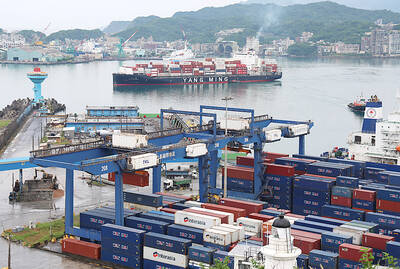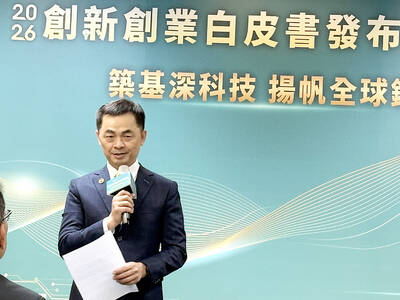Big US companies are accelerating efforts to move more of their supply chains from China in light of the tariffs imposed by the administration of US President Donald Trump.
Companies in sectors such as technology, clothing and footwear are exporting more goods from emerging giants, including Vietnam and Malaysia, data show.
At the same time, the shift has exposed the murkiness of trade export rules, putting a premium on lawyers expert in the minutiae of US customs rules.
“We have a lot of questions from our members,” said Sage Chandler, vice president of international trade at the Consumer Technology Association. “Companies are trying to find ways to avoid having to pay 25 percent.”
Some companies might be pushing the envelope a little too much, contravening US rules against “transhipments,” the routing of China-made goods through other countries to evade tariffs, legal experts say.
Trump since last year has slapped 25 percent duties on US$250 billion of Chinese imports and threatened additional levies on all other Chinese items coming to the US — although the two sides last month agreed to hold their fire for now.
Trump’s trade measures have led some multinationals to fortify their North American operations and others to transfer some manufacturing capacity from China to any number of countries, including Vietnam, Cambodia, Malaysia, the Philipines, Bangladesh, India and Ethiopia.
Exports of computers and electronics from Vietnam to the US have risen 71.6 percent in the first five months of this year compared with the same period last year, US government data showed.
The pattern has also held for other machines and equipment, with exports from Vietnam rising 54.4 percent over the period.
Even before Trump targeted China on trade, US companies had been reducing their dependence on China because of increasing production costs and elevated transport expenses compared with other Asian countries.
However, the trade dispute has sped up those moves.
Ralph Lauren Corp has “accelerated the diversification of our supply chain to mitigate the long-term impact of any potential tariff outcomes,” a spokesperson for the clothing company said, adding that tariffs have so far not hit the company’s goods.
Xcel Brands Inc, which owns Isaac Mizrahi, Judith Ripka and other fashion houses, is to cease manufacturing in China next year, a big shift from two years ago when the country was the source of 100 percent of its merchandise.
The company has moved clothes-making operations to Vietnam, Cambodia and Bangladesh, and is exploring adding capacity in Central America, Mexico and Canada.
This retooling, which was in the works prior to the tariffs, could boost profit margins, Xcel chief executive officer Robert D’Loren said.
The trade dispute with China “accelerated our sourcing diversification efforts,” he said.
A decade ago, more than 90 percent of US footwear was made in China, but today, the figure is 69 percent, said Matt Priest, president of Footwear Distributors and Retailers of America.
Yet shifting production outside of China to other Asian centers is not necessarily a panacea. Many of these countries lack the roads, airports and other vital infrastructure of the world’s second-biggest economy. And there is no guarantee that the emerging manufacturing venues will be safe from US tariffs down the road.
Companies can also run afoul of US law if goods are made in China and then sent to an intermediate destination to dodge US tariffs.
“I have noticed an upswing in the number of tariff evasion cases that have been made public and also in the number of inquiries my firm has received,” said Jeff Newman, a Boston attorney.
A Wall Street Journal report last month showed that billions of dollars of Chinese-made goods were being rerouted in this manner through Vietnam, Malaysia and the Philippines.
Retail giants such as Walmart Inc and Target Corp say significantly reducing their reliance on Chinese-made goods is unrealistic because of the demand for low prices.
That means retailers are more likely to stop producing goods with very low profit margins than to incur additional costs by moving production out of China, Priest said.
He points to flip flops, which earn returns of only about 6 or 7 percent.
“It won’t be worth moving to Vietnam for 6 or 7 percent-margin shoes,” Priest said. “That shoe is not worth it.”

CHIP RACE: Three years of overbroad export controls drove foreign competitors to pursue their own AI chips, and ‘cost US taxpayers billions of dollars,’ Nvidia said China has figured out the US strategy for allowing it to buy Nvidia Corp’s H200s and is rejecting the artificial intelligence (AI) chip in favor of domestically developed semiconductors, White House AI adviser David Sacks said, citing news reports. US President Donald Trump on Monday said that he would allow shipments of Nvidia’s H200 chips to China, part of an administration effort backed by Sacks to challenge Chinese tech champions such as Huawei Technologies Co (華為) by bringing US competition to their home market. On Friday, Sacks signaled that he was uncertain about whether that approach would work. “They’re rejecting our chips,” Sacks

Taiwan’s exports soared 56 percent year-on-year to an all-time high of US$64.05 billion last month, propelled by surging global demand for artificial intelligence (AI), high-performance computing and cloud service infrastructure, the Ministry of Finance said yesterday. Department of Statistics Director-General Beatrice Tsai (蔡美娜) called the figure an unexpected upside surprise, citing a wave of technology orders from overseas customers alongside the usual year-end shopping season for technology products. Growth is likely to remain strong this month, she said, projecting a 40 percent to 45 percent expansion on an annual basis. The outperformance could prompt the Directorate-General of Budget, Accounting and

NATIONAL SECURITY: Intel’s testing of ACM tools despite US government control ‘highlights egregious gaps in US technology protection policies,’ a former official said Chipmaker Intel Corp has tested chipmaking tools this year from a toolmaker with deep roots in China and two overseas units that were targeted by US sanctions, according to two sources with direct knowledge of the matter. Intel, which fended off calls for its CEO’s resignation from US President Donald Trump in August over his alleged ties to China, got the tools from ACM Research Inc, a Fremont, California-based producer of chipmaking equipment. Two of ACM’s units, based in Shanghai and South Korea, were among a number of firms barred last year from receiving US technology over claims they have

BARRIERS: Gudeng’s chairman said it was unlikely that the US could replicate Taiwan’s science parks in Arizona, given its strict immigration policies and cultural differences Gudeng Precision Industrial Co (家登), which supplies wafer pods to the world’s major semiconductor firms, yesterday said it is in no rush to set up production in the US due to high costs. The company supplies its customers through a warehouse in Arizona jointly operated by TSS Holdings Ltd (德鑫控股), a joint holding of Gudeng and 17 Taiwanese firms in the semiconductor supply chain, including specialty plastic compounds producer Nytex Composites Co (耐特) and automated material handling system supplier Symtek Automation Asia Co (迅得). While the company has long been exploring the feasibility of setting up production in the US to address